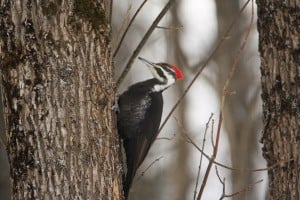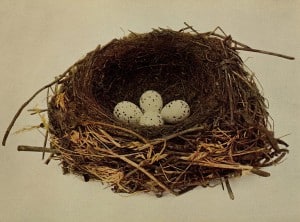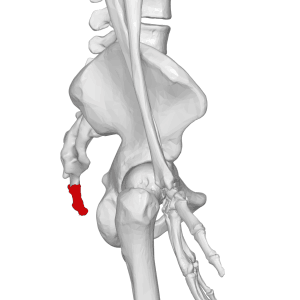One of the greatest gifts you can give a child is a sense of wonder in the natural world and how everything in nature can be explained by science and critical thinking. And nowhere is there a better example of the power of critical thinking than when it comes to evolution. Even though a full understanding of the mechanisms of evolution requires an understanding of genetics, children can usually grasp the essential components by age seven or eight. These components are variation (individuals in a population of the same species can vary somewhat in their traits), inheritance (traits are inherited from parents and passed on to offspring), natural selection (life forms with traits that help them to survive and reproduce are most likely to pass on these traits to the next generation) and time (major change usually takes thousands of generations or more).
Effective questioning
Thoughtful questioning not only serves to clarify the components of evolution but also helps elicit a sense of wonder, curiosity and deeper appreciation of nature itself. Start by encouraging children to look in detail at the organism or behavior in question. Ask them to describe what they see and why they think the plant or animal looks or behaves that way. Always use the language of beauty and awe: “Isn’t a woodpecker amazing! Imagine yourself making a living this way!” Ask open-ended questions starting with “Why?” or “What do you think?” Encourage the kids to do the same. If they don’t know the answer, help them come up with a reasonable hypothesis — an educated guess. Model this yourself. Later, follow up with an Internet search. Remember that it’s perfectly fine to say “I don’t know” or “Scientists don’t have an answer yet.”
Time activities
One of the hardest things for kids and adults alike to grasp is the concept of evolutionary time and numbers like a million or a billion. Counting can be helpful here. Ask a child to count to a 100. This might take 30 seconds if they count quickly. At that rate, counting to a 1,000 takes about 5 minutes, to 100,000 takes a day’s work (10 hours), to a million takes two weeks work, to 100 million takes five years work, and to a billion takes a whole working life. Imagine how long a billion years is!
Toilet Paper Timeline: This is a fun way to help children visualize the massive amount of time that life on Earth has had to evolve. You’ll need a roll of toilet paper of 450 sheets (tear off 50 from a roll of 500), sticky notes and a long hall or open area outdoors. Explain that the Earth is about 4.5 billion years old and that life first emerged about 3.5 billion years ago. You might add that we don’t yet fully understand how life began, but scientists are getting closer and closer to the answer.
If you are going outside, choose a calm day. Unroll the entire roll of toilet paper. Each square of toilet paper represents about ten million years. Write down each stage (see below) on a sticky note. Attach the sticky notes to the squares indicated. Take the kids on a walk along the timeline and discuss as you go. Be enthusiastic and use the language of wonder! Note: BYA = billion years ago; MYA = million years ago 4.5 BYA: Earth is formed, along with the other planets (square 1), 3.7 BYA: Earth’s crust solidifies (square 80), 3.5 BYA: first life appears in oceans (square 100), 3.25 BYA: photosynthesis begins in oceans (square 125), 2.4 BYA: oceans contain significant amounts of oxygen (square 260), 1.9 BYA: first cells with nuclei appear in oceans (square 310), 650 MYA: first multicellular organisms appear (square 385), 500 MYA: first land life (square 400 ), 250 MYA: massive volcanic eruption kills mass extinction of 96 percent of all life (square 425), 245 MYA: Age of Dinosaurs begins (square 426), 200 MYA: the first mammals appear (square 430), 150 MYA: supercontinent breaks up and continents drift apart (square 435), 65 MYA: Asteroid impact ends Age of Dinosaurs and kills 70 percent of all life (square 444), 3.5 MYA: first early humans appear in Africa (last square, 3.6 cm from the end), 100,000 years ago: first Homo sapiens, our species, appears (last square, 1 mm from end), 10,000 years ago: recorded human history begins (last square, 0.1 mm from end)
More activities
1. See your DNA: Believe it or not, it’s easy to see your own DNA, the recipe that makes you. Mix a half-quart (500 ml) of drinking water with 1 tbsp (45 g) of salt and stir until salt is dissolved. Transfer 3 tbsp (14 ml) of salt water into a clear glass. Swirl the salt water around in your mouth for 1 minute. Spit the water back into the glass. Cheek cells will be suspended in the salt water. Gently stir the salt water with one drop of clear dish soap. (Note: Soap breaks down the cell membranes, releasing the DNA.) In a separate glass, mix 7 tbsp (105 g) of isopropyl alcohol and 3 drops of food coloring. Tilt the salt-water cup and gently pour the alcohol–food color mixture so that it forms a layer on top (about 1 in. /2 cm thick). 8. Wait 2 ½ minutes. You should see small white clumps and strings forming. That’s your DNA!
2. Camouflaged Eggs: The eggs of birds that nest on the ground (e.g., killdeer, ruffed grouse) are highly camouflaged, not just in colour but in pattern, too. These birds will also choose ground (e.g., dark sand instead of light sand) that offers the best match to the egg color and pattern. In other words, birds and their eggs have evolved to maximize camouflage. Species that nest in cavities often lay all-white eggs, since camouflage is not a concern. For this activity, you’ll need hard-boiled eggs and different colored markers or tempera paint.
Show the children pictures of real eggs from ground-nesting birds. Discuss the most effective colours and patterns. Visit a natural area where the eggs will be hidden. Ask the children to think about how to best camouflage their eggs. Each child then takes two to three eggs and uses paint or markers to colour and mark them. Have them hide their eggs in a designated area. Hide a few unpainted white eggs as well for comparison. Excluding their own eggs, how many can they then find in two minutes? Which were the best camouflaged?
3. Adaptations Scavenger Hunt: For many plants and animals, spring is a time of mating and reproduction. Over millions of years, special adaptations have evolved to make this process possible. These include adaptations for attracting a mate, defending a breeding site and, in the case of plants, evolving ways to have their genes spread by the wind or by animal pollinator.
Make up a list of common adaptations to look for and give each child a copy. Briefly discuss the purpose of each adaptation. Here are a some ideas: 1. brightly colored flowers (attract pollinators), 2. flowers with a strong scent (attract pollinators), 3. flowers with lines or spots on petals (guide pollinator to nectar), 4. a “catkin” flower (e.g., poplar) hanging like a caterpillar from the twig (easily jostled by wind, thereby spreading the pollen), 5. a bird chasing another away (defending nest or territory) 6. brightly colored male birds like a mallard or cardinal (attract a mate), 7. a dull-coloured female bird (camouflage on nest), 8. male birds singing (attract a mate, defend territory)
Visit an area where the kids are likely to find the flowers and birds in the list. They may want to use a camera to take pictures of the adaptations. Encourage them to add other probable adaptations that they see. Share and discuss.
4. Meet the Beast Within You: In this activity, kids will learn about our remnant body parts and behaviors that link us to our distant past. Our ancestors needed these “vestiges” in order to survive. Our bodies still carry dozens of reminders of how we used to be millions years ago. However, humans are very different now. We no longer walk on all fours and don’t wear a thick coat of fur. Over time, we have evolved into the bare-skinned and big-brained creatures we are today.
Ask the kids to try the following: 1. Feel their coccyx at the bottom of their backbone. It is the remnant of a lost tail. 2. Using a mirror, look at their canine teeth. They were very useful to early humans for tearing tough flesh. Compare to those of a dog (show picture). 3. Using a mirror, have them make a big, toothy smile. Smiles were a way for early humans to scare away an enemy. Their meaning has changed! 4. Ask if anyone can wiggle their ears? Early humans could do this to help in hearing, just like dogs today. Because of a genetic mutation, only some people can do it now. 5. Have them put their arm in cold water until goose bumps appear. These bumps were the body’s way to erect the thick fur we once had. This made us look larger and more ferocious. Show a picture of a dog with its back hair raised. Ask why our hairy coats may have disappeared?
Earth Day should be about more than picking up litter. Make it a celebration of our planet’s amazing biodiversity and the process behind life’s myriad forms – evolution.



